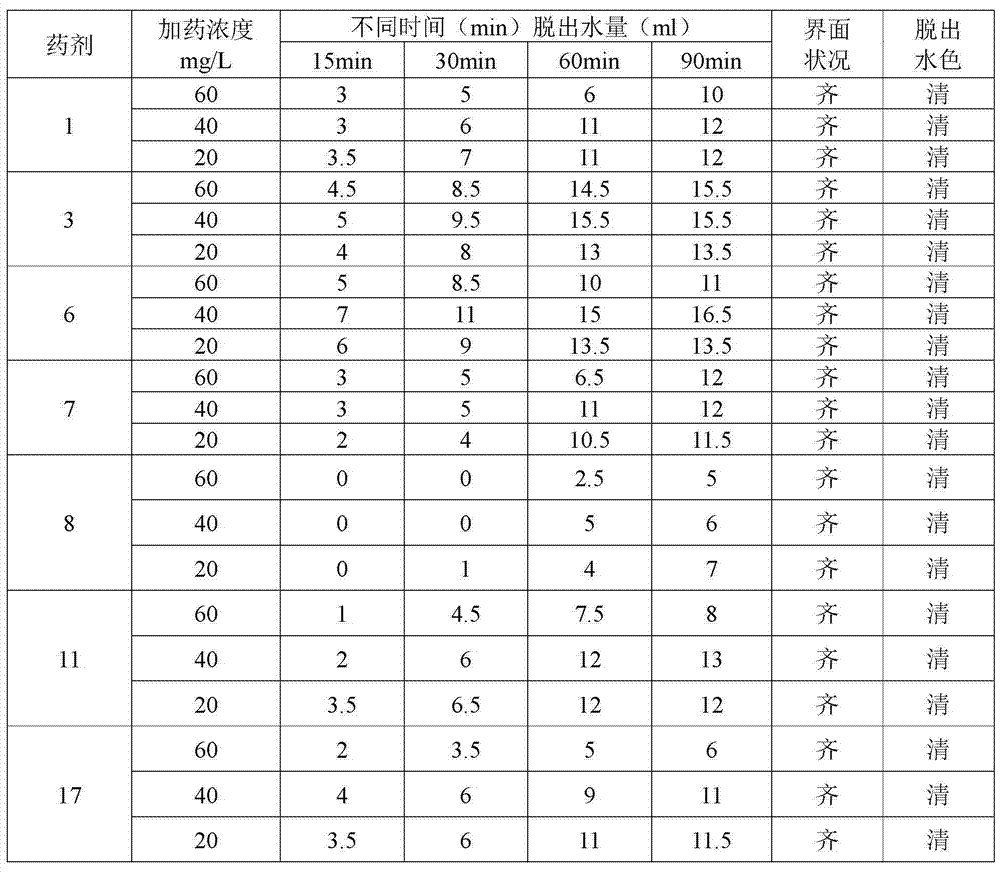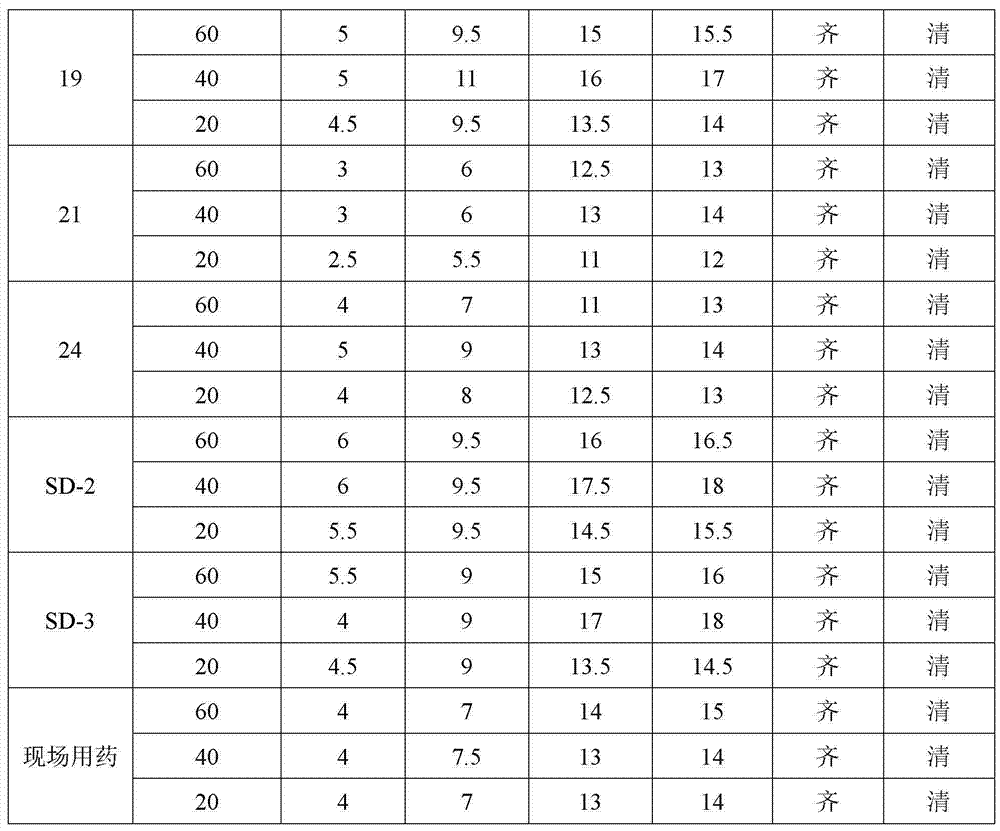Method for preparing SD-3 demulsifier
A demulsifier, SD-2 technology, applied in the field of preparation of SD-3 demulsifier, can solve the problems of inability to adapt to demulsifier dehydration treatment, environmental pollution, poor biodegradability of demulsifier, etc., and reduce the cost of demulsification and dehydration. , the effect of reducing environmental pollution and saving heating energy
- Summary
- Abstract
- Description
- Claims
- Application Information
AI Technical Summary
Problems solved by technology
Method used
Image
Examples
Embodiment 1
[0021] Will C 4-9 Organic phenol and diethylenetriamine are mixed in a molar ratio of 1:2, heated and controlled at 30°C, stirred for 30 minutes, and the molar ratio is C 4-9 Organic phenol: formaldehyde is added dropwise with formaldehyde in the ratio of 1:2. After the dropwise addition, the temperature is raised to 150-170°C, and the temperature is controlled to react for 3 hours. The product is a new type of thermoplastic resin initiator.
[0022] Add the catalyst sodium hydroxide to the thermoplastic resin, stir while heating, heat to 90°C, turn on the vacuum pump for 30 minutes, control the temperature at 115-135°C, add propylene oxide and ethylene oxide continuously respectively, and the feeding is completed Finally, react at a temperature of 115-135°C and a pressure of 0.1-0.3Mpa for 30 minutes, lower the temperature to 90°C, and turn on the vacuum pump for 30 minutes to obtain polyether.
[0023] The amount added is 1:50:25 according to the weight ratio of thermoplast...
Embodiment 2
[0027] Will C 4-9 Organic phenol and triethylenetetramine are mixed in a molar ratio of 1:3, heated and controlled at 30-40°C, stirred for 30 minutes, and the molar ratio is C 4-9 Formaldehyde is added dropwise at a ratio of 1:3 of organic phenol: formaldehyde. After the dropwise addition, the temperature is raised to 150-170°C, and the temperature is controlled to react for 3 hours. The product is a new type of thermoplastic resin initiator.
[0028] Add the catalyst potassium hydroxide to the thermoplastic resin, stir while heating, heat to 90°C, turn on the vacuum pump for vacuum treatment for 30 minutes, control the temperature at 115-135°C, add propylene oxide and ethylene oxide continuously respectively, and the feeding is completed Finally, react at a temperature of 115-135°C and a pressure of 0.1-0.3Mpa for 30 minutes, lower the temperature to 90°C, and turn on the vacuum pump for 30 minutes to obtain polyether.
[0029] The amount added is 1:100:100 according to the ...
Embodiment 3
[0033] Will C 4-9 Organic phenol and tetraethylenepentamine are mixed in a molar ratio of 1:4, heated and controlled at 30-40°C, stirred for 30 minutes, and the molar ratio is C 4-9 Organic phenol: formaldehyde is added dropwise with formaldehyde in the ratio of 1:4. After the dropwise addition, the temperature is raised to 150-170°C, and the temperature is controlled for 3 hours to react. The product is a new type of thermoplastic resin initiator.
[0034] Add the catalyst boron trifluoride to the thermoplastic resin, stir while heating, heat to 90°C, turn on the vacuum pump for vacuum treatment for 30 minutes, control the temperature at 115-135°C, add propylene oxide and ethylene oxide continuously, and feed After completion, react at a temperature of 115-135°C and a pressure of 0.1-0.3Mpa for 30 minutes, lower the temperature to 90°C, and turn on the vacuum pump for 30 minutes to obtain polyether.
[0035] The amount added is 1:200:200 according to the weight ratio of ther...
PUM
 Login to View More
Login to View More Abstract
Description
Claims
Application Information
 Login to View More
Login to View More - R&D
- Intellectual Property
- Life Sciences
- Materials
- Tech Scout
- Unparalleled Data Quality
- Higher Quality Content
- 60% Fewer Hallucinations
Browse by: Latest US Patents, China's latest patents, Technical Efficacy Thesaurus, Application Domain, Technology Topic, Popular Technical Reports.
© 2025 PatSnap. All rights reserved.Legal|Privacy policy|Modern Slavery Act Transparency Statement|Sitemap|About US| Contact US: help@patsnap.com



